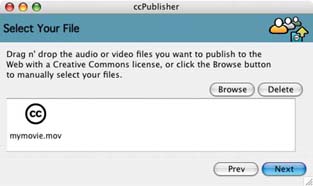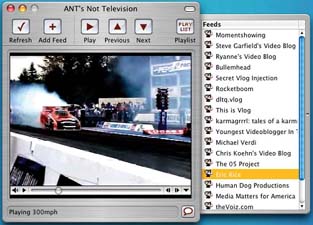Hack 81. Vlog Your Life
| < Day Day Up > |
|
Web logs, also known as blogs, are text-oriented web sites people that update on a daily or semiregular basis. Vlogs are the same concept, only they are video-oriented. Blogging is a Web phenomenon. From teenagers to Presidential candidates, people from all walks of life have been given the opportunity to easily express and discuss their views, stories, and daily lives with the world in writing. With the availability of broadband Internet connections, digital video cameras, editing systems, video phones, and free blog sites, video logging (a.k.a. vlogging) is another outlet for your video projects.
7.7.1. Starting a VlogA vlog is technically no different than a blog, so if you're already blogging, you're ready to vlog. If you don't have a blog, you can sign up for an account at a variety of sites. Here are some of the more popular blog sites:
There are also many other blogging sites on the Web, which you can find by doing a search using the term "blog host". Each blog site runs slightly differently. Some sites allow you to post from a web site only, while others offer desktop applications. Your choice is really a matter of what appeals to you.
Once you've signed up for a blog, you should become familiar with the way it works. At the very least, you should post one message, just to make sure you know how. 7.7.2. Posting a VlogTo post a vlog, you need some video. Any video will do. Some people are posting unedited video, in small 10-second clips … off their cell phones! Others are posting edited pieces of an artistic, political, or simply experimental nature. Feel free to express yourself and be creative.
Once you have the video you would like to share, you need to compress your video for the Web [Hack #82]. If your blog service provides enough drive space for you to store video, use the provided space. Otherwise, if have a server where you can upload your video, use that server to host your video. If you don't have somewhere to host your video online, you can use the Creative Commons archive at the Internet Archive (http://www.archive.org) or at Our Media (http://www.ourmedia.org). The process of placing video in the Internet Archive is made easy by the free ccPublisher application (http://sourceforge.net/projects/cctools; free, open source). You need an account with the Internet Archive, but the application steps you through the entire process, from selecting the video on your hard drive, to signing up for an account, to selecting a copyright license, to actually uploading the video. Figure 7-26 shows ccPublisher helping to select a video for uploading. Figure 7-26. ccPublisher helping to publish your video After you've uploaded your video, take note of its new URL. To post your vlog, use the tool provided by your blog service (i.e., web site or desktop application) and type a brief description or synopsis of your video where you would normally type your blog text. If you would rather link to your video, instead of embed it, add the following HTML to your post: <a href="http://your.domain.tld/path/to/your/video.mpg">Click to watch</a> Replace your.domain.tld/path/to/your/video.mpg with the actual URL of your video. 7.7.3. Viewing a VlogViewing a vlog requires only a web browser and the appropriate media player. It's just like viewing any other video you might find on the Web. The only thing that is different is the way it is distributed. However, applications are also available that can subscribe to people's vlogs and download the video automatically. If you are using Mac OS X (a Windows version is being developed), you can use ANT (http://www.antnottv.org; free, open source), a desktop application that can subscribe to vlog feeds. ANT then automatically downloads any new video that is posted overnight. You can also comment on the videos that you view, which essentially provides feedback to the producer of the video. Figure 7-27 shows ANT viewing a video by Eric Rice.
On the Web, there is MeFeedia (http://www.mefeedia.com), which collects information on vlog feeds, which are basically broadcasts, and links to them. When you sign up for an account, you can subscribe to a lineup of vlogs you would like to track and view them at your leisure. With vlogging, you have the ability to distribute your videos to anyone with an Internet connection and a media player, and you can view daily videos from people around the world. Have fun! Figure 7-27. ANT playing a video called 300mph |
| < Day Day Up > |
EAN: 2147483647
Pages: 158
